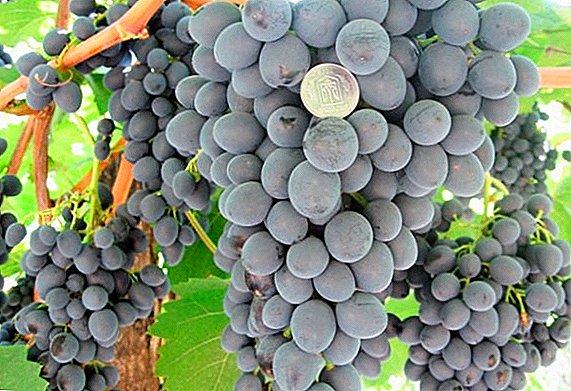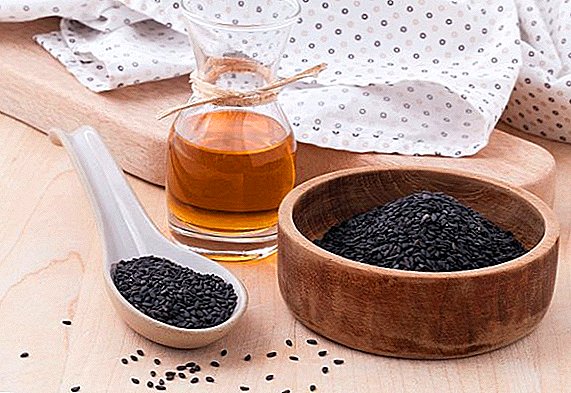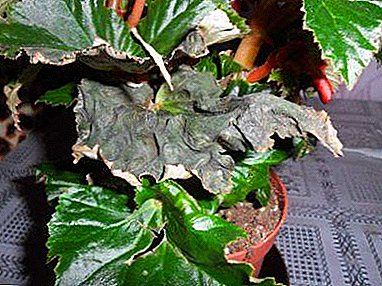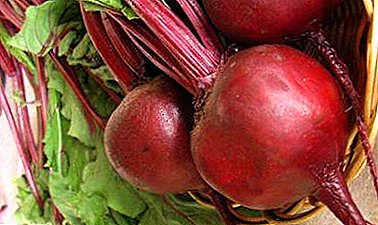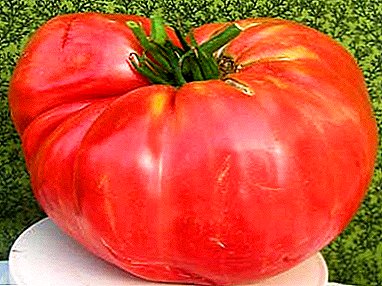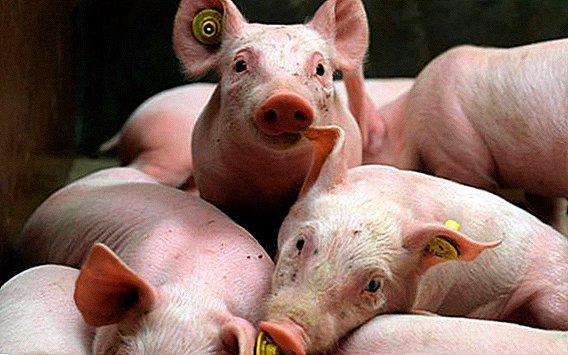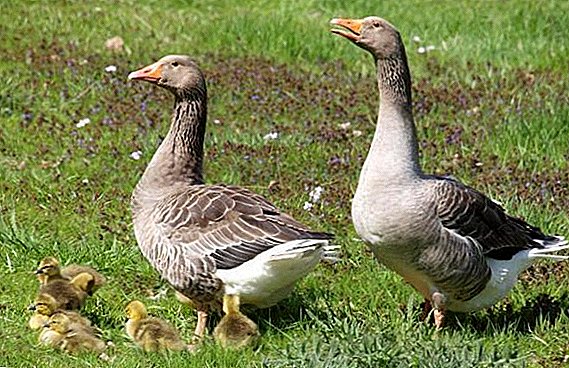 Today we will tell you about one of the most popular breeds of geese in the post-Soviet space, which can be found both in households and in small poultry farms.
Today we will tell you about one of the most popular breeds of geese in the post-Soviet space, which can be found both in households and in small poultry farms.
It will be a big gray goose who feels great in our climate, and caring for adults and young animals does not cause trouble.
History reference
The breed was bred in the 30s of the last century on the territory of the scientific research institute of poultry farming in Ukraine. Toulouse geese and the Romain goose became a selection material. However, this is not the end of the story, since further work on the improvement of qualities was already carried out in the Tambov Region after the war.  Toulouse and Romain goose Specimens were fed on low concentrated feed, work was done to increase body weight and fertility, as well as viability in various conditions of detention. As a result, a productive breed of geese was obtained, which is divided into 2 types: Ukrainian steppe goose and Tambov. Some breeders highlight Ural typethat withstands severe frosts.
Toulouse and Romain goose Specimens were fed on low concentrated feed, work was done to increase body weight and fertility, as well as viability in various conditions of detention. As a result, a productive breed of geese was obtained, which is divided into 2 types: Ukrainian steppe goose and Tambov. Some breeders highlight Ural typethat withstands severe frosts.
Among the many species of birds of great interest to hunters and ornithologists are wild geese: white goose, black goose (brant), white-fronted goose.
Description and external features
The color of the bird corresponds to the name. The neck and chest are painted gray. The wings near the joint have gray plumage, and closer to the edges - black. The back of the body and back are painted white or slightly grayish. The weight of a bird varies from 7 to 9 kg. Females always weigh less than males. The percentage of meat from the total mass of the individual in males and females is the same.  Goose has a wide body. On a stomach two folds are noticeable. Pectoral muscles are convex, well developed. The neck has an average length. The head is slightly larger than average. The beak is thick, painted in orange or dark orange color with a red tip.
Goose has a wide body. On a stomach two folds are noticeable. Pectoral muscles are convex, well developed. The neck has an average length. The head is slightly larger than average. The beak is thick, painted in orange or dark orange color with a red tip.
Did you know? Geese choose a couple of times in their lives. If the partner dies, then the second bird will experience a strong emotional shock, which may refuse to eat. Such a state may hold for several years.
Average annual egg production
This breed does not have high egg production rates.Therefore, this fact should be taken into account when choosing a breed. The gray goose is raised for meat, therefore one individual gives from 30 to 60 eggs per year. Egg weight - 175 g
Find out when geese start to fly at home, as well as what are useful and how goose eggs are used.
Note that the viability of eggs is quite high, so out of 100 pieces you will receive from 60 to 75 individuals of young animals. Such a high rate makes it possible to get about 25-28 viable goslings from one pair per year. 
Conditions of detention
Consider the optimal conditions of the breed, which should be followed when growing Ukrainian and Tambov type. Ural gray geese can withstand lower temperatures, otherwise the conditions are identical.
Requirements for the room
The room, which contains geese, can be made of any materials. It is important that the material carpeting the floor, do not accumulate moisture, and also located at a small distance from the ground (20-30 cm). This is necessary so that in the cold season the floor is not very cool, and also not constantly wet. Important is the lack of drafts, which can lead to colds.
Read also about the intricacies of building a house with your own hands.
This breed of geese has good resistance to frost and high humidityhowever, if the plumage of birds is always wet, then it will not be able to fully perform its functions. For this reason, the bird begins to eat more to maintain the necessary temperature, which entails additional costs.
Sand or sawdust are used as bedding in the summer, and peat or straw in the winter. On one individual for the season takes about 40 kg of litter, which should be considered when purchasing. If there is a problem with the level of ammonia excretion, or the litter is constantly getting wet, then superphosphate is added when replacing (200 g per square).
Walking
In the warm season, geese are released into open areas with grass, where they can be located almost around the clock. This allows not only to reduce the cost of food, but also to enable the bird to expel parasites, as well as eat the necessary herbs to maintain health.  If there is a lake or river near your house, then for geese this is a real paradise where they will spend the lion's share of all time.
If there is a lake or river near your house, then for geese this is a real paradise where they will spend the lion's share of all time.
If the geese have constant access to water, this will play a huge role in their development. You can make a pond yourself, and it does not require very large financial costs.
Water treatments not only help maintain joints and muscles in good condition, but also consume additional food in the form of algae and small fish. It is important to remember that if the livestock feeds exclusively on what it finds itself, while regularly in the water, there is a risk of losing weight due to high activity.
Important! You can not walk birds near landfills, industrial areas or major highways. This can negatively affect the health of geese.
What should I take care of in winter
Many owners are engaged in geese exclusively in the warm season, so as not to create additional problems for themselves. However, this option is not suitable for everyone, so it is important to know how to prepare the bird for the winter.  In winter, the poultry movement activity should be completely limited, otherwise weight loss cannot be avoided. It is highly recommended not to let geese out into the street because a huge amount of energy will be spent on maintaining the temperature, which will affect the appetite of the birds.
In winter, the poultry movement activity should be completely limited, otherwise weight loss cannot be avoided. It is highly recommended not to let geese out into the street because a huge amount of energy will be spent on maintaining the temperature, which will affect the appetite of the birds.
In winter, you need to monitor the quality of the litter that you use. If she gets wet or parasites get in her, then it will be very difficult to find a suitable replacement.
If you use a lot of dry feed, then you should be worried about access to clean warm water. Since the bird cannot get enough moisture along with the feed, it needs to be given an opportunity to quench their thirst at any time of the day. To prevent cold water from becoming a cause of disease, you need to monitor the temperature of the room and water, or install special heaters.
Video: keeping geese in winter
What to feed birds
Next, we consider the diet of feeding gray geese in the cold and warm season. Let's tell about what food is the main, and what - additional.
Spring Summer
In the spring and summer, the lion's share of the diet falls on succulent green foods, which are a variety of herbs. If geese are grazed in open space, then you should not worry about the diet, but if the birds do not have such an opportunity, then you need to satisfy all their needs.
The daily menu should include fresh grass or valuable herbs (alfalfa, clover), silage of legumes or cereals, as well as combined feed. If grazing is still carried out, then it is sufficient in the morning to give vitaminized feed.
Read also about growing alfalfa and clover, forage silage and silage storage.
It is important to consider not only the average need of the individual in the feed, but also the motor activity. Geese should not go hungry, as this will affect their weight. If the bird wants to eat, then it needs to be further fed. 
Autumn winter
It is impossible to graze in the autumn and winter, therefore the owner is responsible for providing all the necessary things. Geese need to give root crops, silage of legumes and cereals, animal feed, valuable grass hay. Feeding must be three times a day, so that there is a stable weight gain.
It is better to give preference to high-quality fortified mixed fodder, as they provide the lion's share of calories, and the roots and silage help the poultry's digestive system to function properly, provide the necessary moisture, as well as some vitamins and minerals.
Important! In winter, geese should have round-the-clock access to gravel and chalk. These additives must be placed in different feeders.
The structure of a complete feed (percentage of the total mass of feed):
- Cereals and legumes - 65-70%.
- Meal and cake - 5-10%.
- Curd or ryazhenka - 3-4%.
- Grass meal - 5-30%.
- Mineral feed - 5%.

Goose brooding instinct
Although many owners blame this breed for poor egg production, but when it comes to incubation, all claims disappear. This is due to the fact that the bird perfectly incubates and takes care of the goslings in the futurethat allows you to abandon the incubator.
The geese keep a close eye on the nest and clutch, driving away strangers as well as restricting their movement near the eggs. This behavior does not allow to place a lot of nests in a small room, so you should worry about this problem in advance.
Breeding chicks
Next, find out the necessary information that will help to get viable young. Subject to the recommendations below, the bird will pick up to 5 kg in 9 weeks. 
The necessary conditions
Goose eggs begin to be laid in March, but this will happen only if the room has an optimal temperature - not lower than 12 ° C. Therefore, additional heating of the goose at this time is mandatory only in the northern regions. In order for the female not to crack all the eggs and not eat the shell due to the lack of minerals, you should regularly give her dairy products.
Eggs are made every other day. If an individual rushes in one particular place, then there will be no problems. However, if the goose decided to make several nests, then you need to worry about moving all the eggs to the nest where the bird spends more time, otherwise you will get a couple of goslings from the force.
Do not forget about the enmity between future mothers, which occurs during the laying of eggs. To eliminate fights, near each nest you need to put a feeder for food, a drinker with water, as well as small containers with minerals.
Video: hatching of large gray geese in an incubator
Feeding
In the first days after hatching, the goslings are fed with the following mixture: crushed hard-boiled egg, fresh curd, crushed corn, sunflower meal. You can also use special feed, however, select high-quality products to avoid disease in young animals. On day 5, goslings are given root crops and cake in the form of gruel. Food must not be dry or very watery.
Daily norms of feeding young animals (feed and green mass):
- 8-14 days - 3-12 g, 5-25 g;
- 15-21 days - 21-50 g, 51-120 g;
- Day 22-28 - 51-100 g, 121-150 g;
- 29-35 days - 101-120 g, 151-200 g;
- 36-42 day - 121-140 g, 201-300
Further, the feed increase in the subsequent periods is 20 g, and the green mass is 50 g. On the 70th day of birth, the goslings are transferred to adult feed. You can translate earlier, but it will affect the weight gain. 
Advantages and disadvantages
This breed has its strengths and weaknesses that should be considered when buying chicks.
Pros:
- quick weight gain;
- a good level of egg production;
- good parenting skills;
- differ unpretentiousness to the conditions of detention.
Minuses:
- meat has average commercial quality, so the breed is rarely used in large poultry farms;
- high feed costs in winter.
Did you know? The maximum life of a goose reaches 25 years, which exceeds the average for dogs.
Video: large gray goose
Poultry farmers reviews about the breed of large gray goose


The gray big goose is unpretentious domestic breed which is suitable both for the beginning owners, and for skilled. This bird does not need greenhouse conditions, which is why it gained its popularity.


